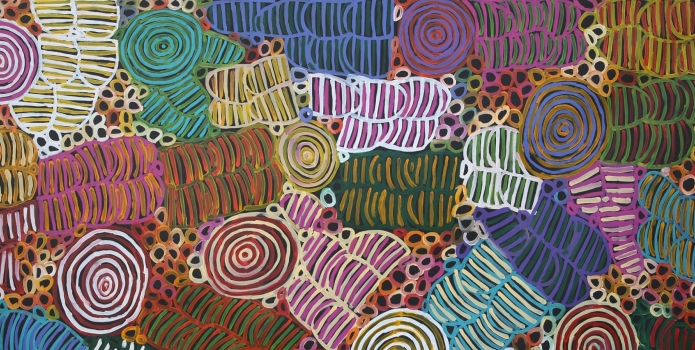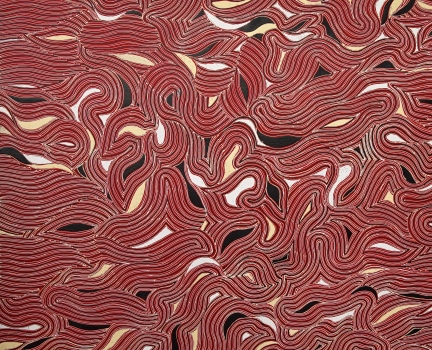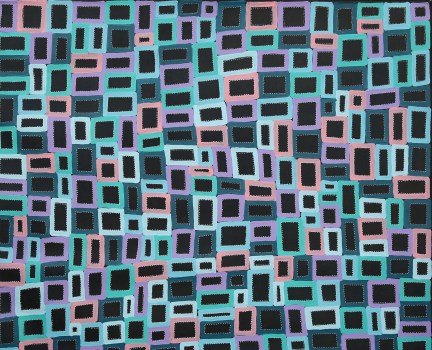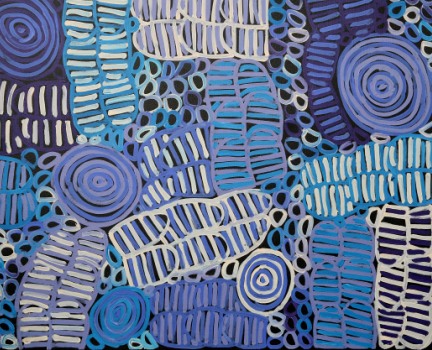Body Painting & Aboriginal Art
The world of Aboriginal ritual and ceremony is a constant source for Aboriginal artists when choosing subject matter for their art and paintings. When preparing for ceremonies it is usual for the dancers to be painted up with ritual designs, using ochre colours on to the dancer’s body. These designs can represent clan identity or totemic associations connected with the ceremony that is being conducted.
In Utopia, in Central Australia, the women’s ceremonial body paint designs are created in this way - firstly the dancers cover their bodies with animal fat, and then the women trace these designs onto their breasts, arms and thighs. As the body painting takes place, all the women sing the ceremonial songs they are about to enact, while each woman takes her turn to be ‘painted up’. Their songs relate to the Dreaming stories of Ancestor Creation journeys as well as songs for totemic plants, animals and natural forces. Awelye, the traditional word used in Utopia to name women’s ceremonial body paint, and the ritual dancing demonstrates respect for the land. In performing these ceremonies the dancers ensure well-being and happiness within their communities.
In Utopia the old women still paint the ceremonial designs on their breasts, first with their fingers, and on their chests, and then with a brush called a typale, made from a stick. They paint with red and white ochres. Then they dance, showing their legs. The old women dance with a ceremonial stick in the earth. The spirits of the country gave women’s ceremonies to the old women. The woman sings, then she gives that ceremony to the others, to make it strong. The old woman is the boss because the spirits of the country have given her the ceremony. So all the women get together and sing.
The old women sing these ceremonies if people are sick; they sing to heal young girls, or children. If a child is sick in the stomach, they sing. The old women are also holding their country as they dance. The old women dance with that in mind. They teach the younger women and give the knowledge to their grand-daughters, so then all the grandmothers and granddaughters continue the tradition.
The women’s ceremony is kept separate from the men’s ceremony, even though each is equally important. This story conveys the artists’ respect for the land and the food it provides to the people. Minnie Pwerle’s Dreamings are “Awelye - Atnwengerrp” and the “Bush Melon”, both of which are body paintings. The bold linear pattern of stripes and curves throughout Minnie Pwerle’s painting, illustrates women’s ceremonial body paint design. Awelye – Atnwengerrp is depicted by a series of lines painted in different widths and colours, representing the lines painted on the top half of the women’s bodies during ceremonies in their country of Atnwengerrp. Other members of Minnie Pwerle’s family have carried on the tradition of representing the Awelye body paint designs, including her children and grandchildren.
View artists:
Back to Aboriginal Dreamtime Stories





